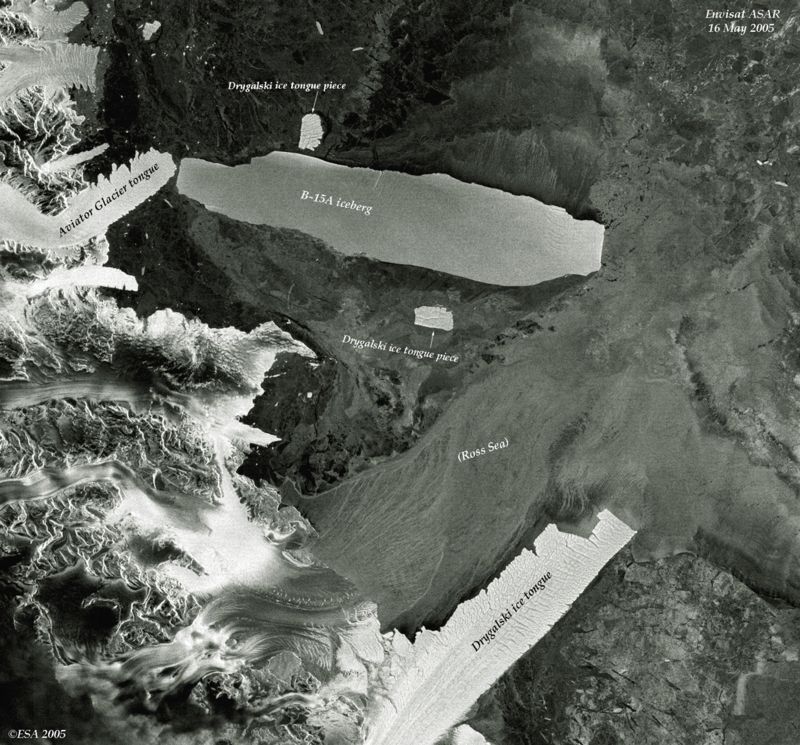Wild Iceberg Tears up Antarctica

A huge wandering iceberg is tearing up the Antarctic like a slow-moving bull in a frozen China shop.
The roving destructor, named B-15A, slammed into the Drygalski ice tongue a month ago and broke off at least two city-sized chunks. Now it is poised to strike another feature sticking out from the continent.
At 71 miles (115 kilometers) long, B-15A is the largest free-floating object in the world.
It is expected to lumber into the Aviator Glacier any day now, scientists with the European Space Agency said Tuesday. The researchers released a satellite image taken May 16.
Aviator was discovered in 1955 and named for flyers who helped open up the continent for exploration. The floating structure is attached to the continent and protrudes about 15 miles (25 kilometers) into Lady Newnes Bay within the Ross Sea.
If B-15A gets stuck, as it has before, researchers fear it could block sea ice behind it, thwarting animals that need to move from shore to the open sea.
B-15A is the largest chunk left of a bigger iceberg, known as B-15, that broke off the Ross Ice Shelf in March 2000. That initial frozen hunk was about the size of Jamaica. After B-15 broke apart, the chunk named B-15A drifted into McMurdo Sound, where it blocked ocean currents and caused other sea ice to build up, threatening wildlife.
Get the world’s most fascinating discoveries delivered straight to your inbox.
Scientists predicted an imminent collision back in January this year. Instead, the iceberg ran aground and stalled out. Then it broke free in March. On the move again, it collided with the Drygalski ice tongue in April, forcing the redraw of Antarctica maps.
Related Stories
Robert is an independent health and science journalist and writer based in Phoenix, Arizona. He is a former editor-in-chief of Live Science with over 20 years of experience as a reporter and editor. He has worked on websites such as Space.com and Tom's Guide, and is a contributor on Medium, covering how we age and how to optimize the mind and body through time. He has a journalism degree from Humboldt State University in California.



